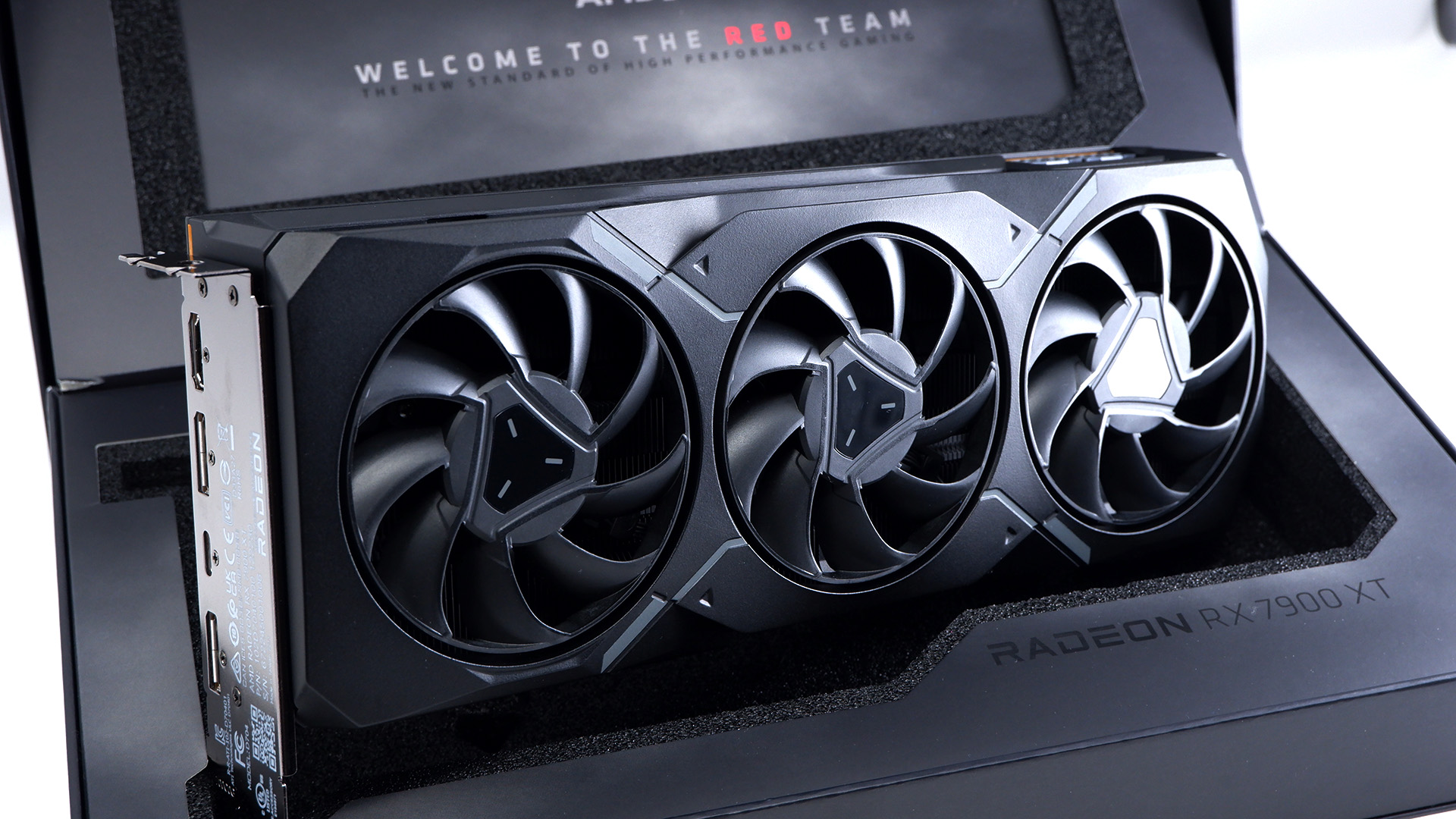Our Verdict
You get what you pay for with the RX 7900 XT, which is about 90% of the RX 7900 XTX. Problem is the XTX is 100% worth spending another $100 on.
For
- Faster than an RX 6950 XT
- Great design and cooling
- Lots of memory
- Slightly cheaper than RX 7900 XTX
Against
- RX 7900 XTX is too close for comfort
- Quite power hungry
PC Gamer's got your back
AMD's Radeon RX 7900 XT is a slightly slimmed back version of the Navi 31 GPU and the company's top graphics card, the RX 7900 XTX. Starting at $899 and therefore offering a slightly cheaper way into the RDNA 3 generation, you could also be forgiven for thinking it's not that much cheaper than the best. The RX 7900 XTX is priced tantalisingly close at $999. So why would you pick up the cheaper chip of the two? That's a good question, and I'm not sure I have a good answer.
- Read up on the upgrades with RDNA 3 in our AMD RX 7900 XTX review.
For the second-run graphics card out of AMD's RX 7000-series stable and the RDNA 3 architecture, the RX 7900 XT is pricier than I was expecting. But as we've seen from both AMD and Nvidia this generation, there's really no escaping high price tags if you want to secure the best, or even second-best, 4K performance.
Let's start with the performance of this card, because there's no doubt it is very capable at 4K.
Within reason, it's safe to assume you could max out a 4K 60Hz gaming monitor with this card installed in your machine. When I left the ray-traced pretties to one side, I was safely over an average frame rate of 60fps at 4K with the RX 7900 XT. That's with minimum fps slightly below that mark, so not an entirely smooth 60fps, but generally close.
| Header Cell - Column 0 | RX 7900 XTX | RX 7900 XT |
|---|---|---|
| Architecture | RDNA 3 | RDNA 3 |
| GPU | Navi 31 | Navi 31 |
| Process node | 5nm GCD + 6nm MCD | 5nm GCD + 6nm MCD |
| Transistors | 57.7B | 57.7B |
| Die size | 300mm2 GCD, 220mm2 MCD (combined) | 300mm2 GCD, 220mm2 MCD (combined) |
| Compute Units | 96 | 84 |
| Stream Processors | 6,144 | 5,376 |
| Ray Accelerators | 96 | 84 |
| AI Accelerators | 192 | 168 |
| Game clock (GHz) | 2.3 | 2 |
| Boost clock (GHz) | 2.5 | 2.4 |
| Memory | 24GB GDDR6 | 20GB GDDR6 |
| Memory bus | 384-bit | 320-bit |
| Infinity Cache | 96MB | 80MB |
| Total Board Power (watt) | 355 | 315 |
| Price (MSRP) | $999 | $899 |
With ray tracing enabled, my mileage did vary. AMD has done a great deal to improve the ray-traced performance with the RDNA 3 architecture found inside this GPUa, and that helps this card perform excellently in Far Cry 6, which is a very AMD-friendly game. In Cyberpunk 2077, however, the RX 7900 XT fell far short of the RX 7900 XTX's performance, which is surprising even for that difference of 12 Ray Accelerators. It just seemed to get overwhelmed by that demanding benchmark more so than the XTX.
4K performance

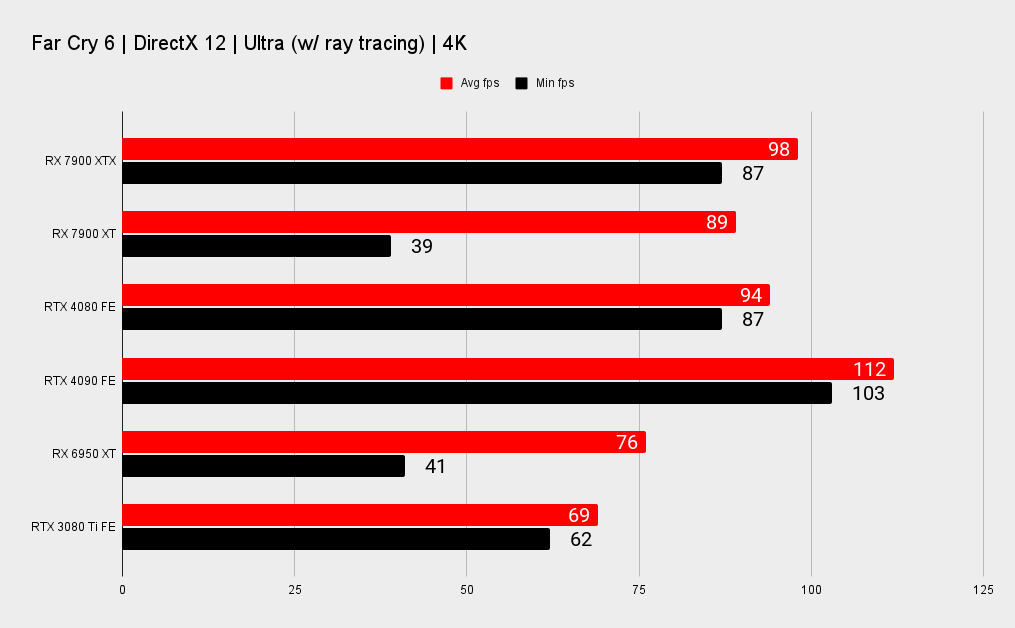

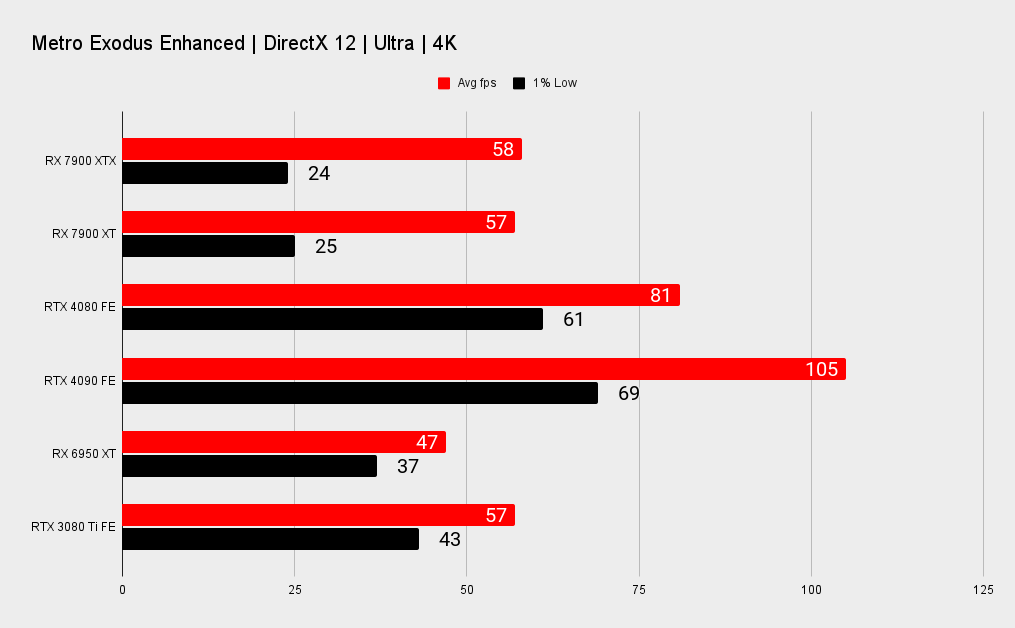
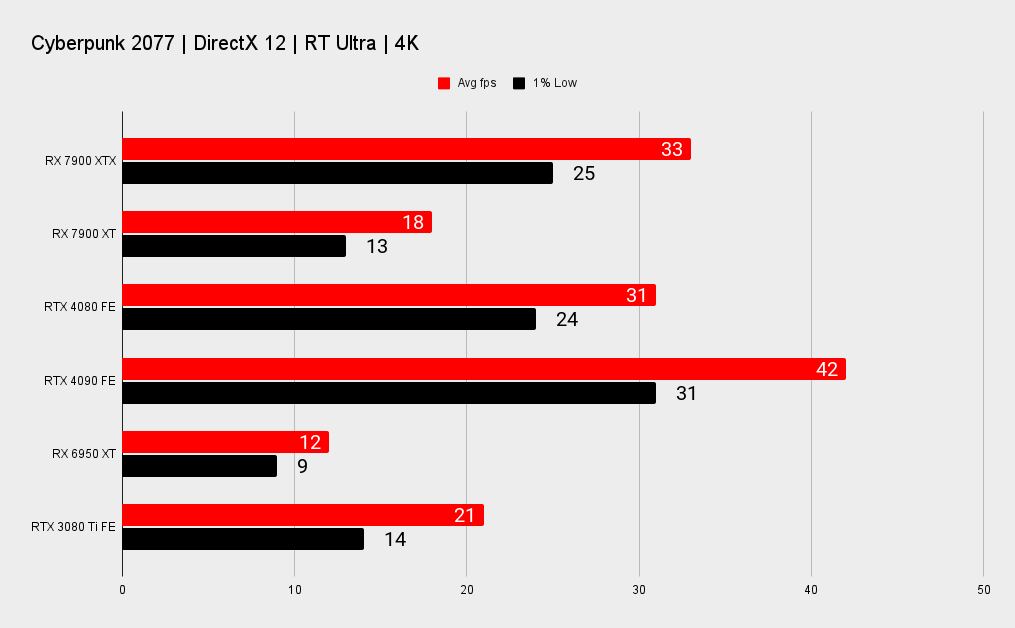
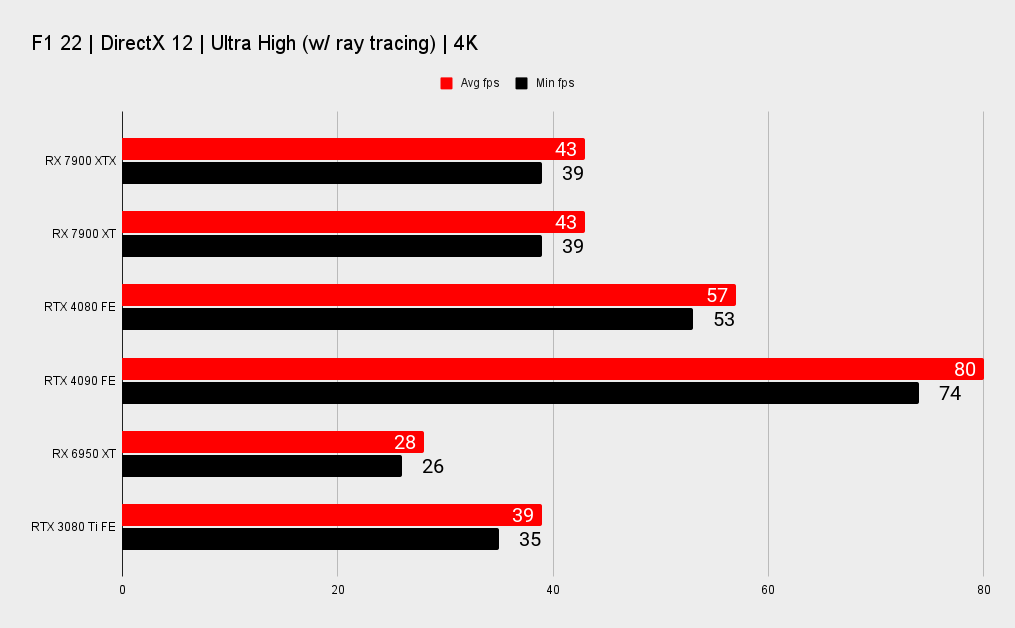

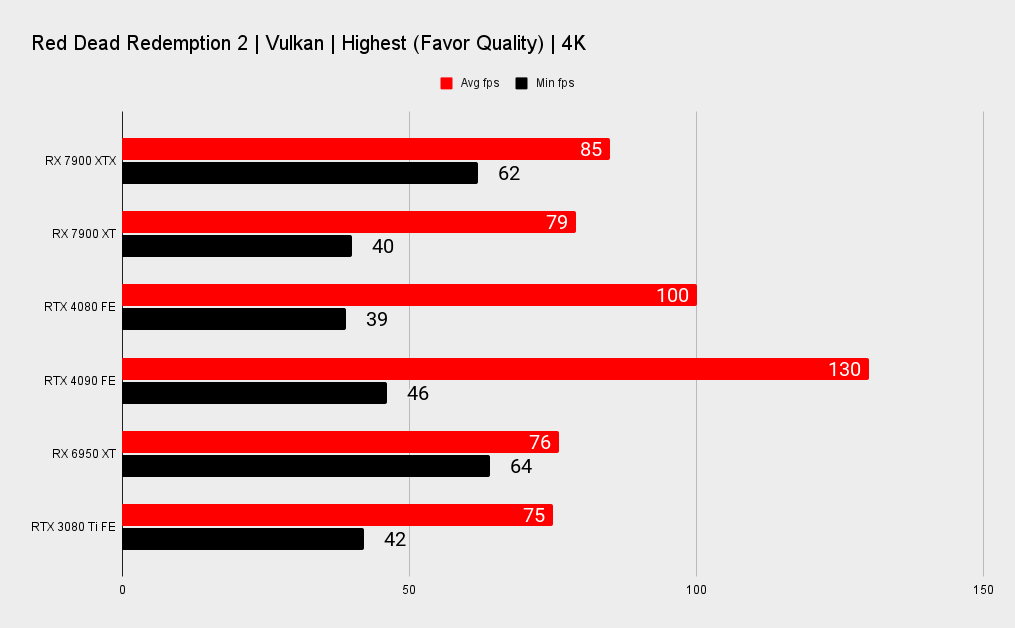
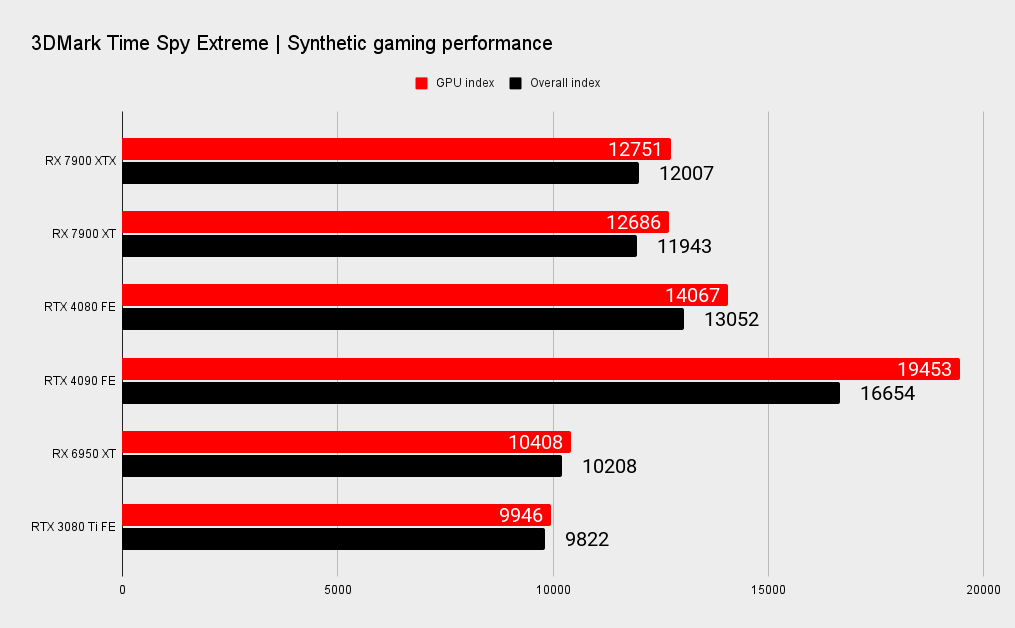
CPU - Intel Core i9 12900K
Motherboard - Asus ROG Strix Z690-F Gaming WiFi
RAM - Trident Z 5 RGB 32GB (2x 16GB) DDR5 @5,600MHz (effective)
CPU cooler - Asus ROG Ryujin II 360mm liquid cooler
PSU - Gigabyte Aorus P1200W
Monitor - Gigabyte M32UC
At 1440p, however, you can also expect performance close to that all-important 144fps—maxing out, or very nearly, a great blend of speed and picture quality.
The RX 7900 XT outperforms AMD's previous top card, the RX 6950 XT, in every benchmark I tested and by a good margin, too. Considering the RX 6950 XT launched at over $1,000, and now sits around $800, maybe less, that's a point of pride for the RX 7900 XT.
1440p performance
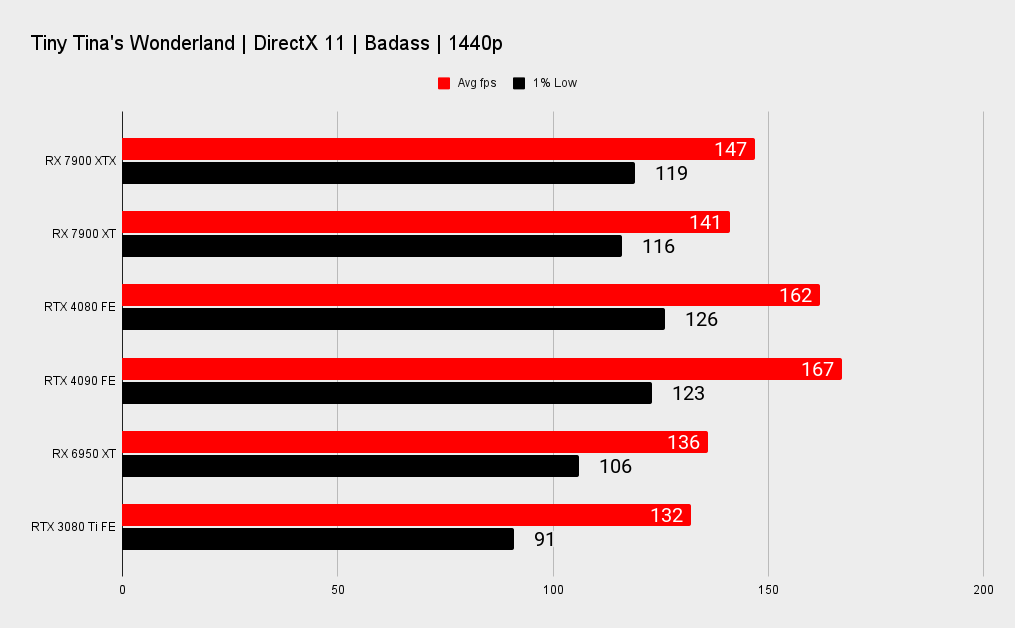
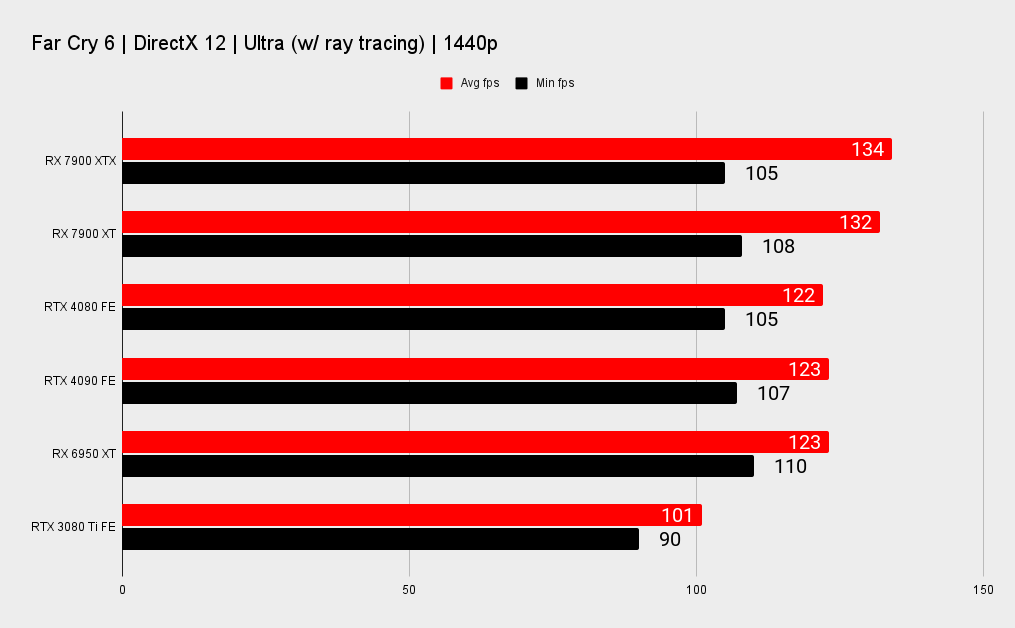
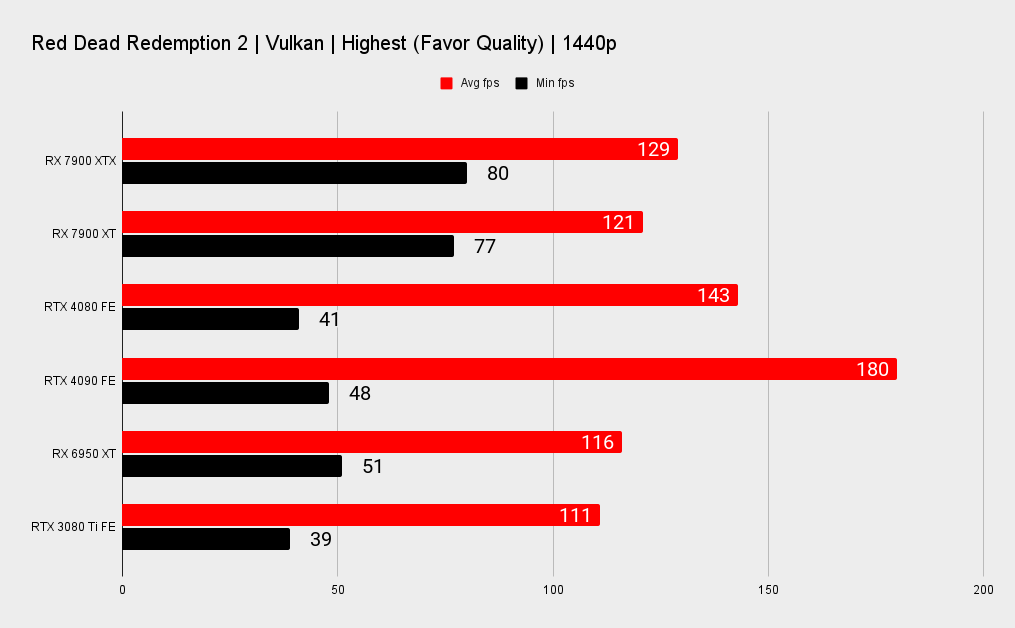

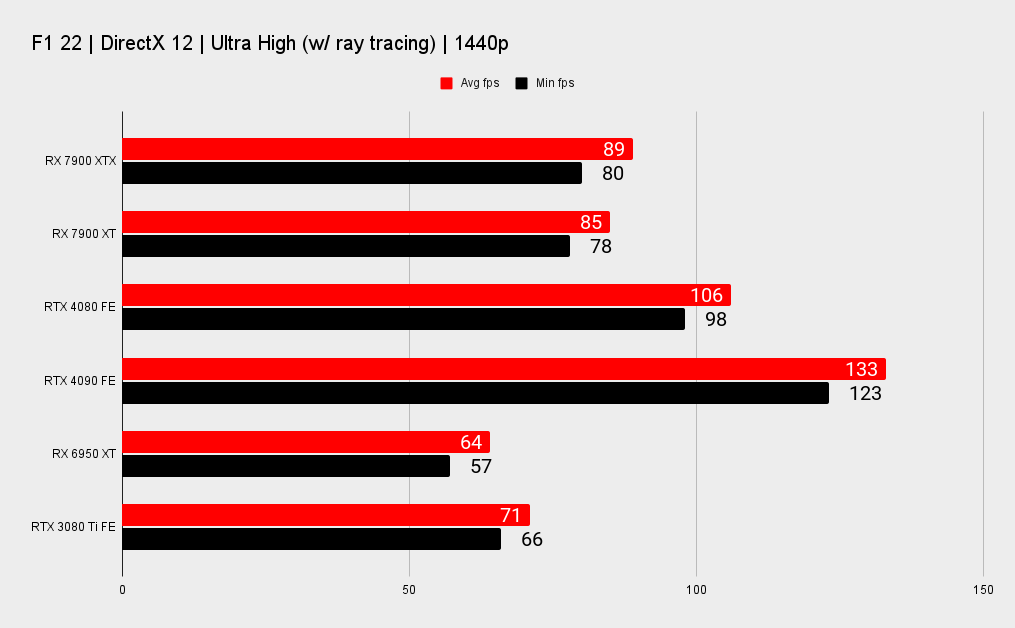

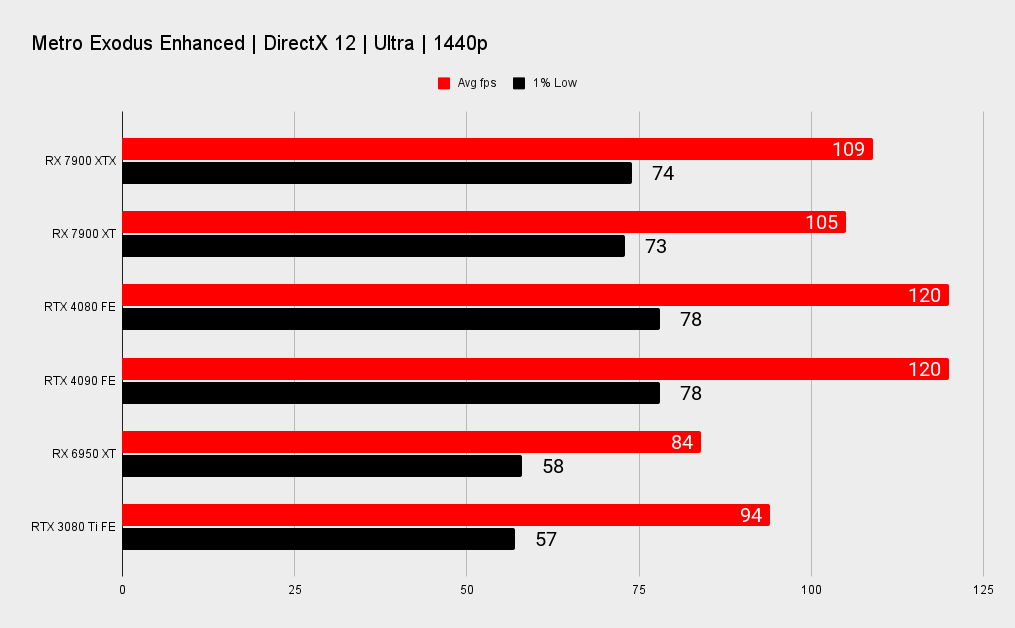
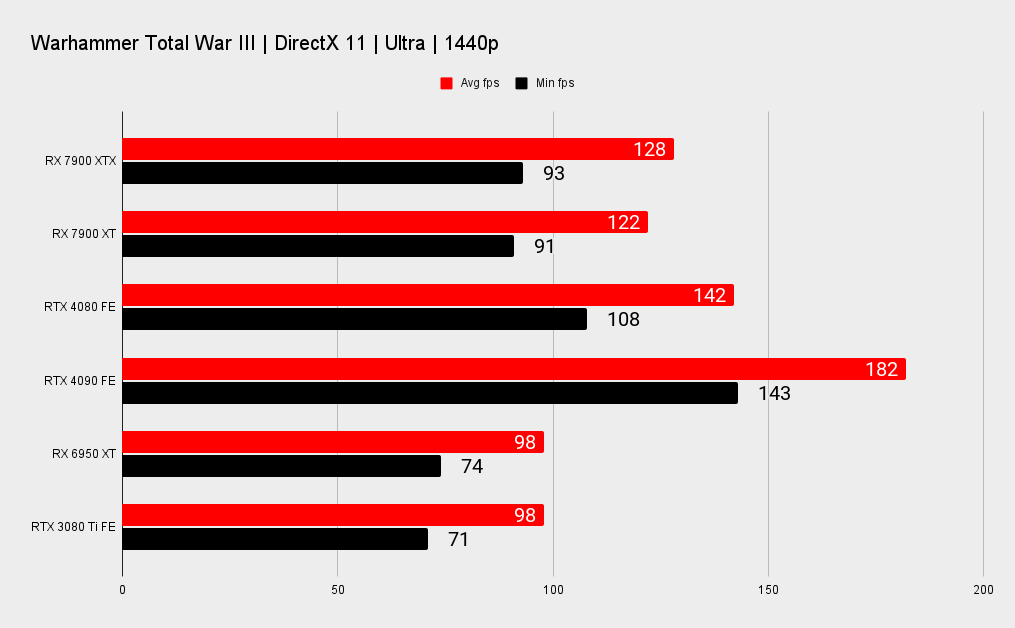

1080p performance

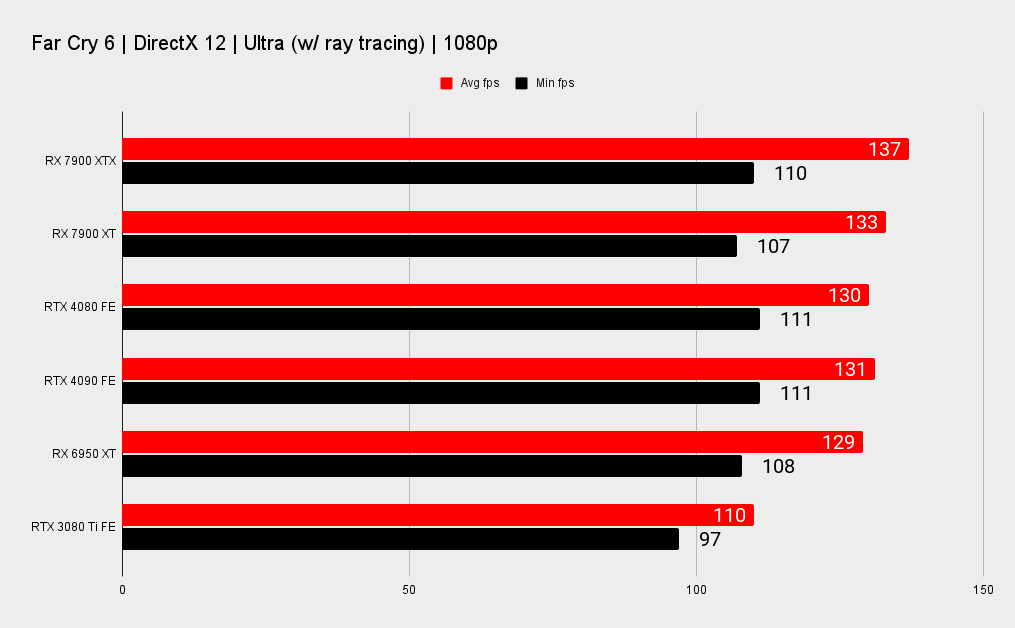
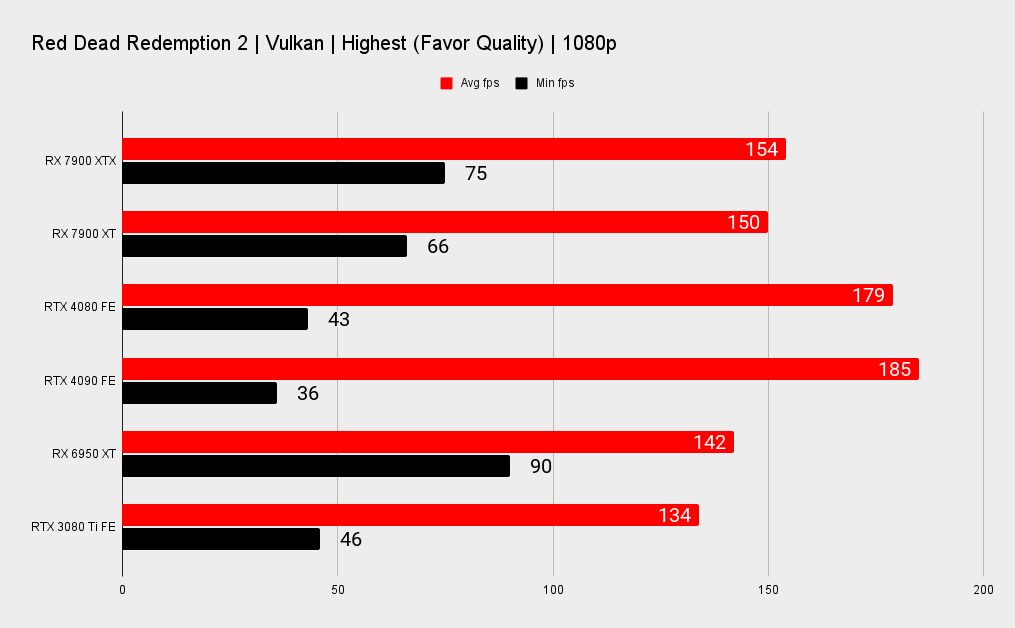


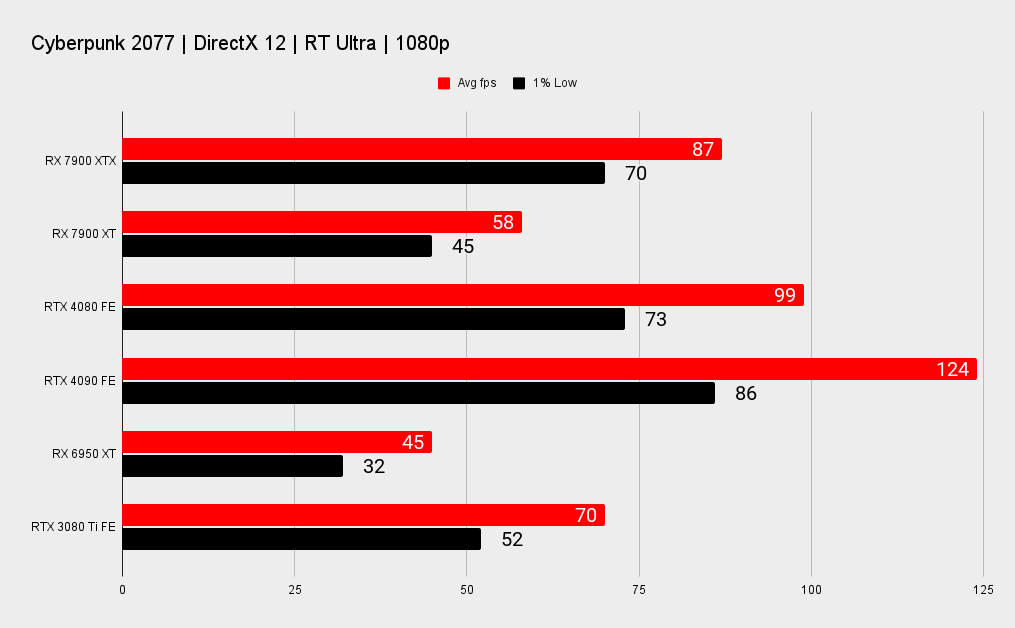


Where the XT really does well, however, is in thermal performance. This card is clocked lower than the XTX, and while it's still quite a thirsty graphics card in terms of power, it runs notably cooler than the XTX did over the same three Metro Exodus benchmark runs.
Overall, I'd say there are a few things the RX 7900 XT does well. For starters, it appears to be a good upgrade on even the RX 6950 XT, and considering the price difference between the two at launch, that's a good sign of AMD's progression with the RDNA 3 architecture. The reference cooler on this also seems pretty capable for the price, with temperatures running relatively cool considering its performance.
Thermal and power performance
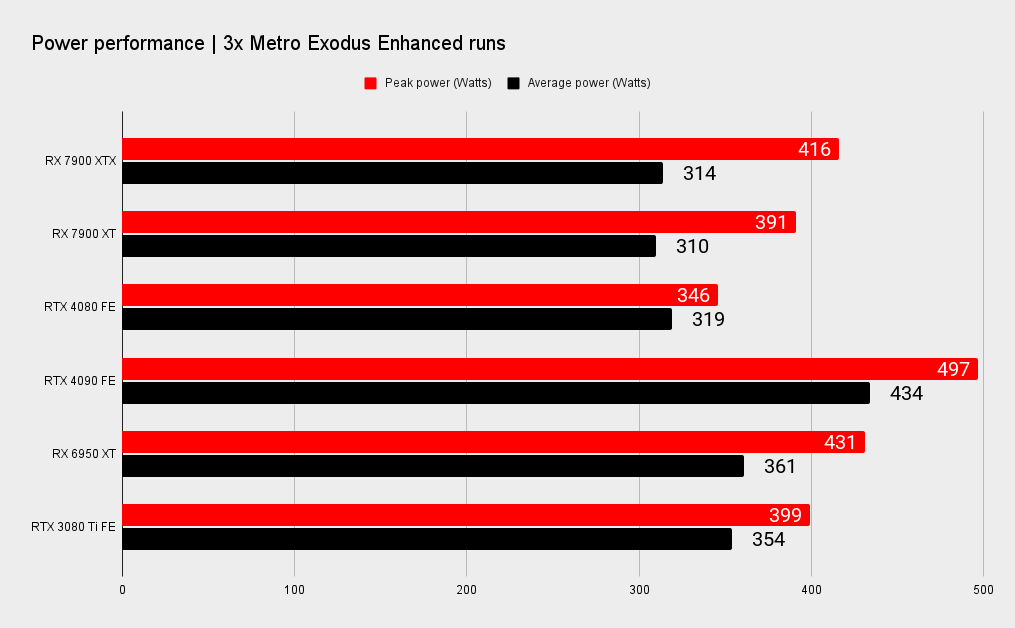
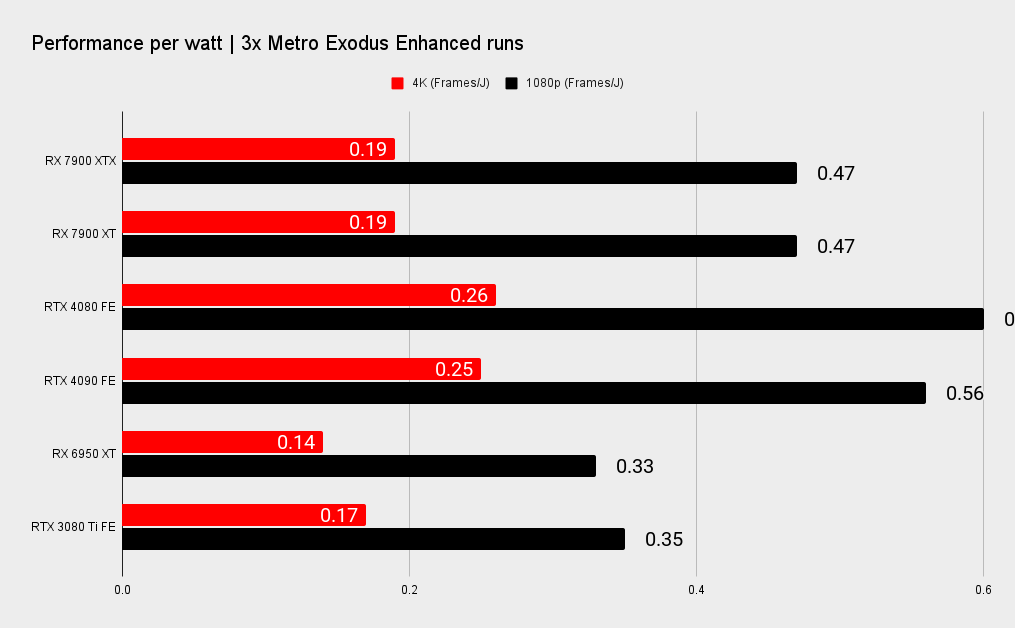
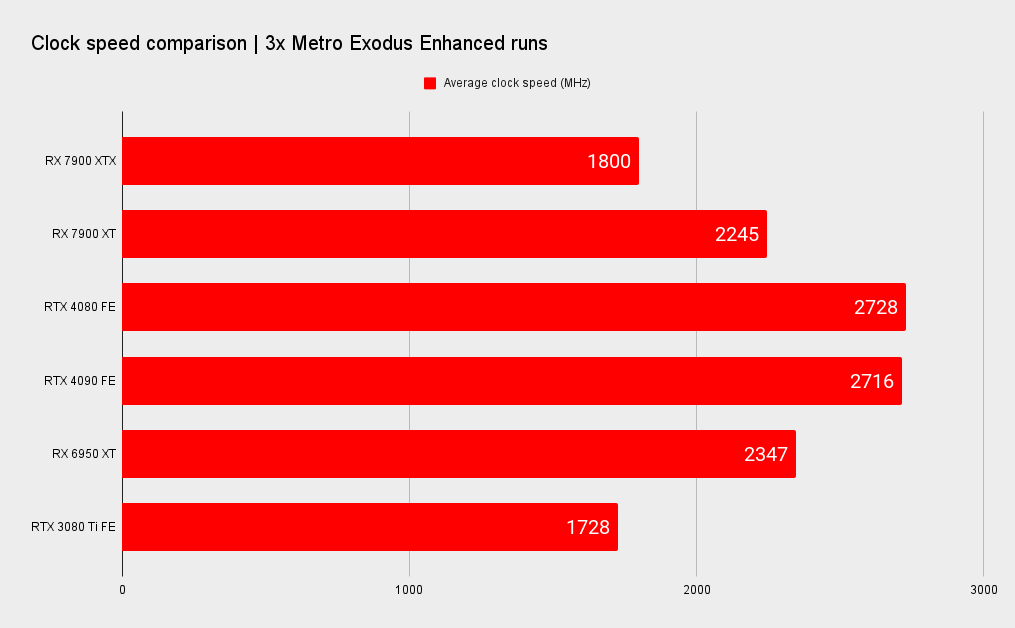
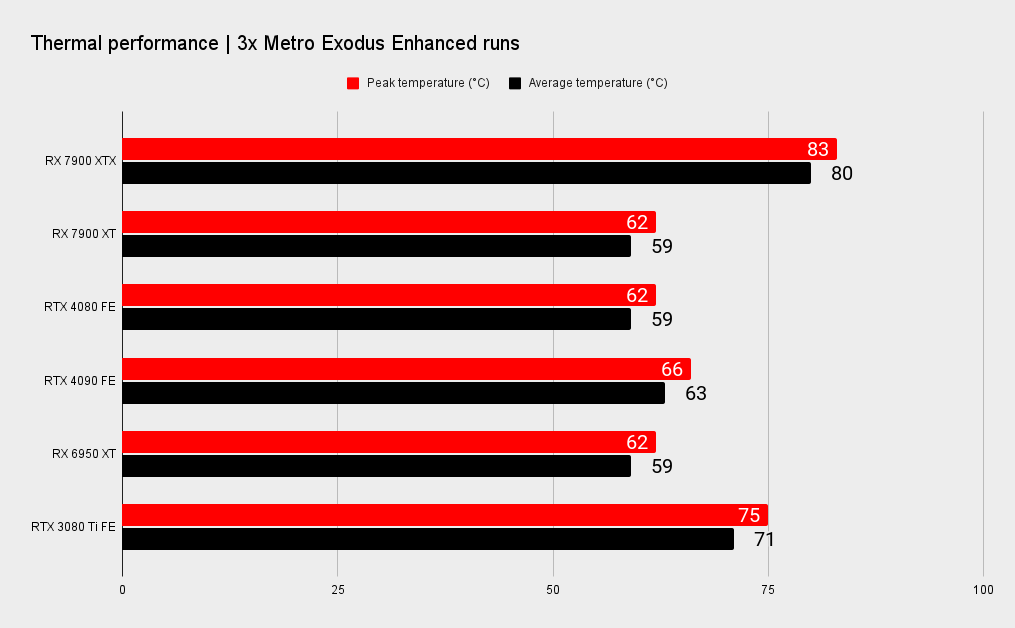
Though the RX 7900 XT also does something else extremely well: It makes the RX 7900 XTX look like a much better deal by comparison.
If you're willing to spend another $100 (11% more than the RX 7900 XT), you can snag 14% more cores, 4GB more memory, and a generally faster card in the RX 7900 XTX. It's a pretty good deal, especially if you consider AMD's history with this sort of high-end GPU launch.
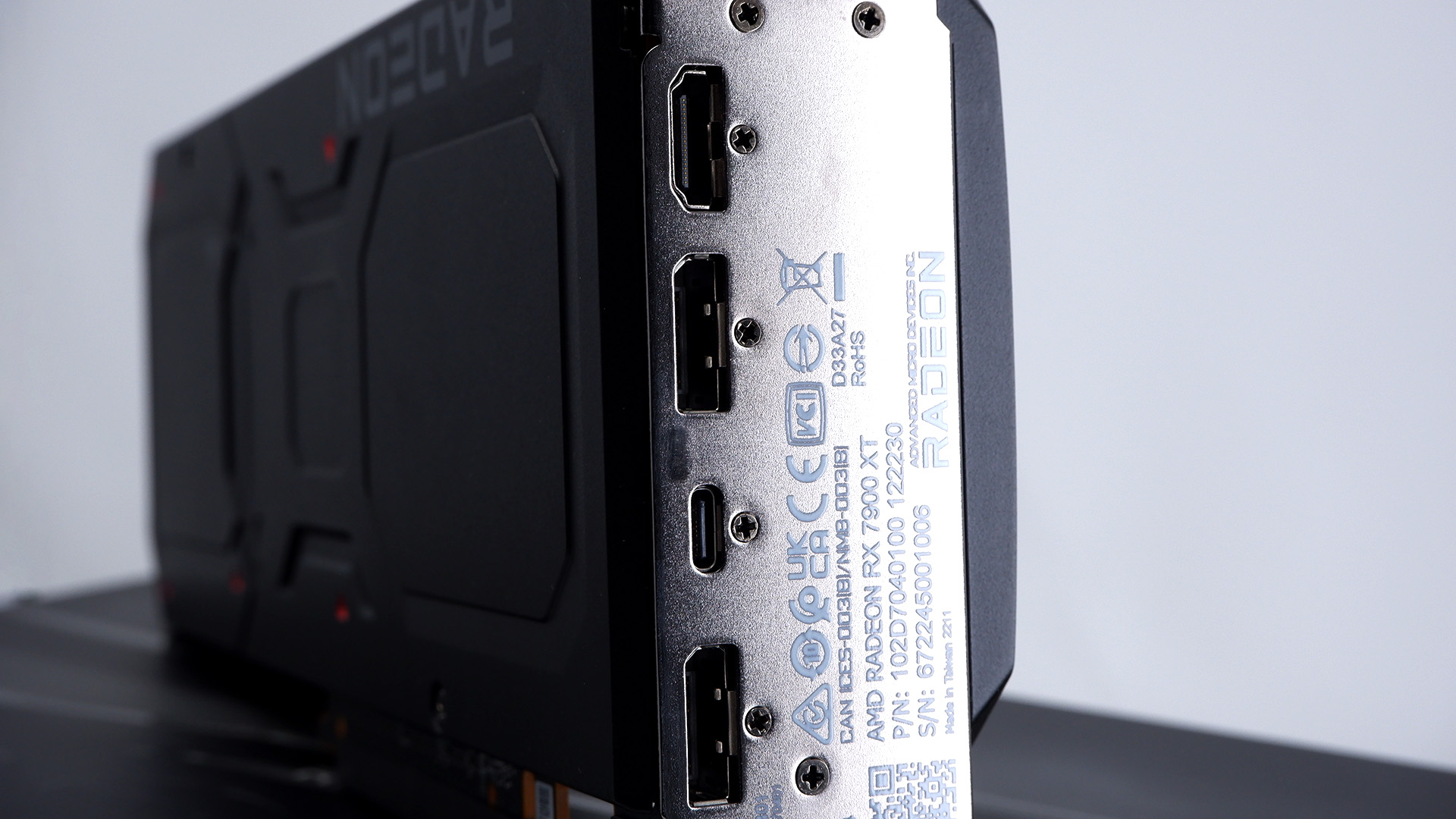
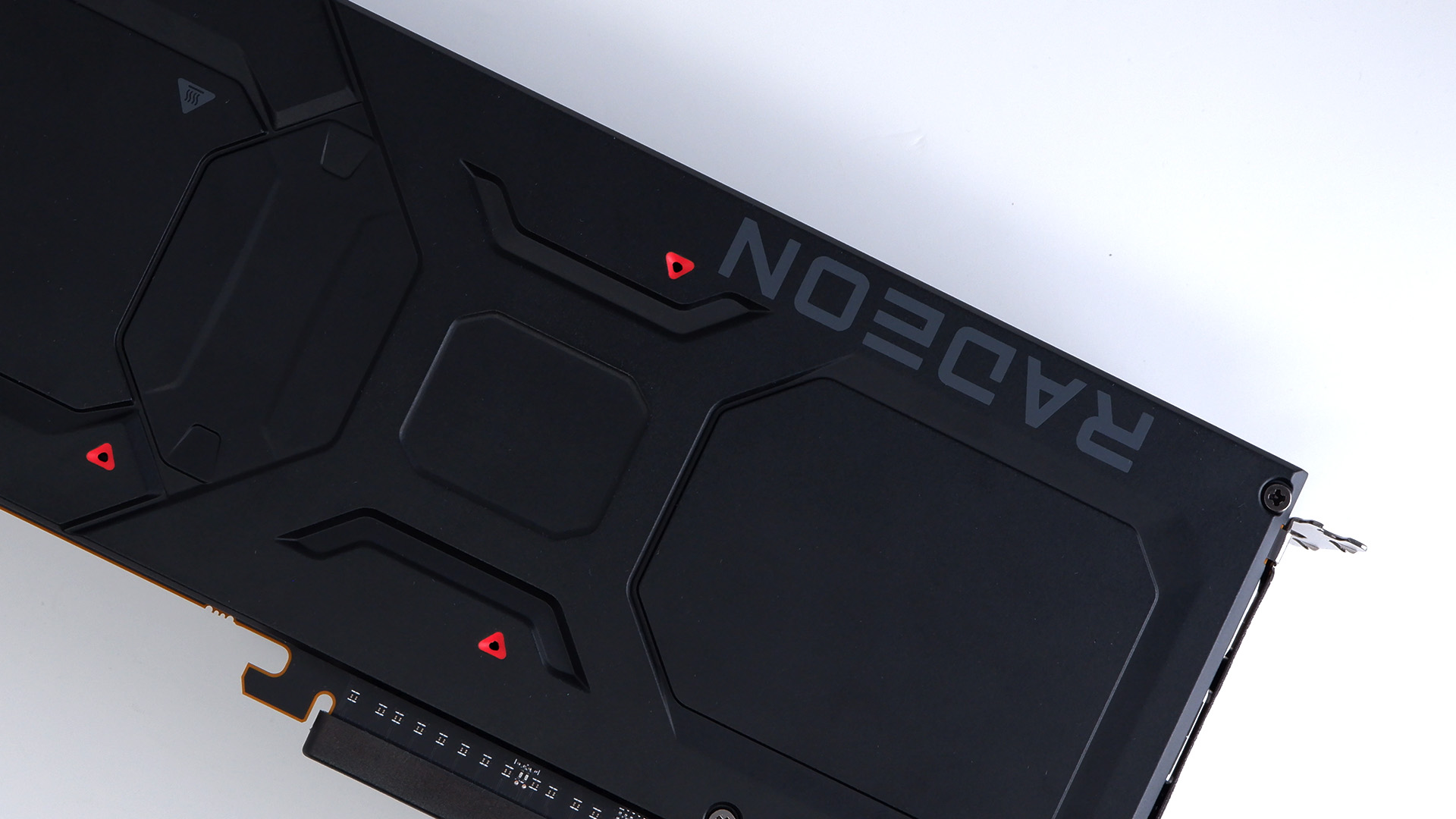
I'm going to want to find the extra $100 somewhere in my build and pick up the XTX instead.
Take the RX 6900 XT and RX 6800 XT, for example. The RX 6900 XT offers just 11% more cores than the RX 6800 XT, and at launch (prices are generally much lower now) it asked for $350 more of your hard-earned cash. That's a 44% price increase for 11% more cores and little else—the RX 6900 XT also offered very similar specs to the RX 6800 XT beyond core counts. Basically, depending which way you look at it, the RX 6800 XT was either a great deal, or the RX 6900 XT wasn't. Probably a bit of both.
Seemingly that was too good of a deal to replicate with the RX 7000-series. Back to the RX 7900-series and you're looking to pay a smaller premium for the top card, the XTX, which by many counts is a whole lot better than the XT.
There are a few times when the differences between the XT and XTX are minimal, and the performance delta practically non-existent. The XT is also the much more efficient and cooler running of the two. Generally, though, you get what you pay for with the higher-end XTX card, if not a bit more.

We're at a loss for that actually affordable current-gen GPU from anyone right now, despite four graphics cards launched between the two major graphics card players. I'm sure we'll see some return of affordability to the lesser-spec models from both sides, but it feels like the recent GPU price inflation and high demand have really done a number on this generation of GPUs. A near-top end graphics card like the RX 6800 XT launching for $649 seems like a distant memory now.
Where does that leave the RX 7900 XT? Well, it's another GPU that's sort of right where you'd expect it to be for its money. It's certainly not bad—it's roughly 10% shy of the performance of the XTX for 10% less money—it's just not much of a deal, either.
So the RX 7900 XT is pretty much bang on what you'd expect for this price disparity between it and the XTX. The frame rates you'll see in-game also appear to largely scale linearly with the money spent.

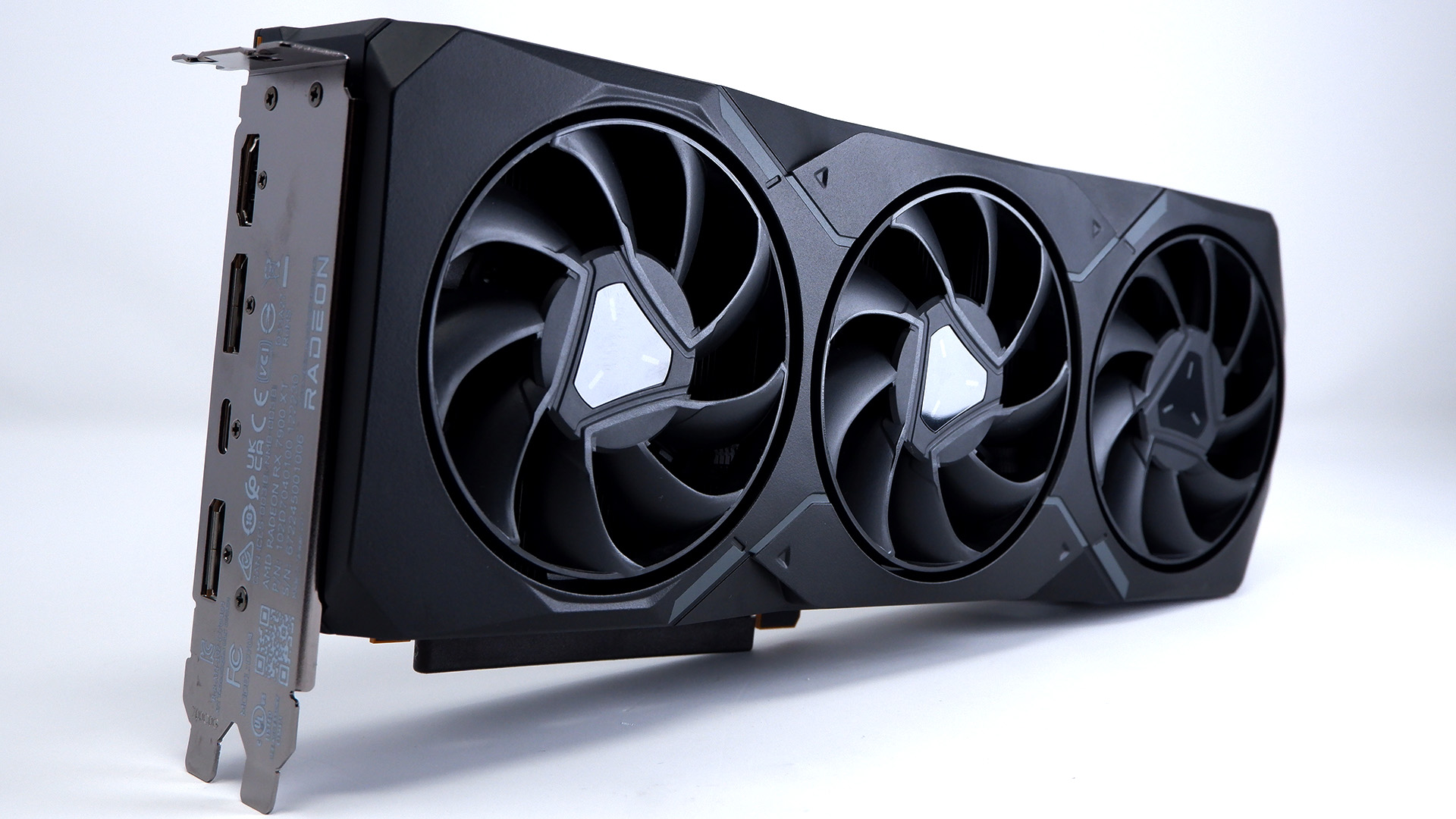
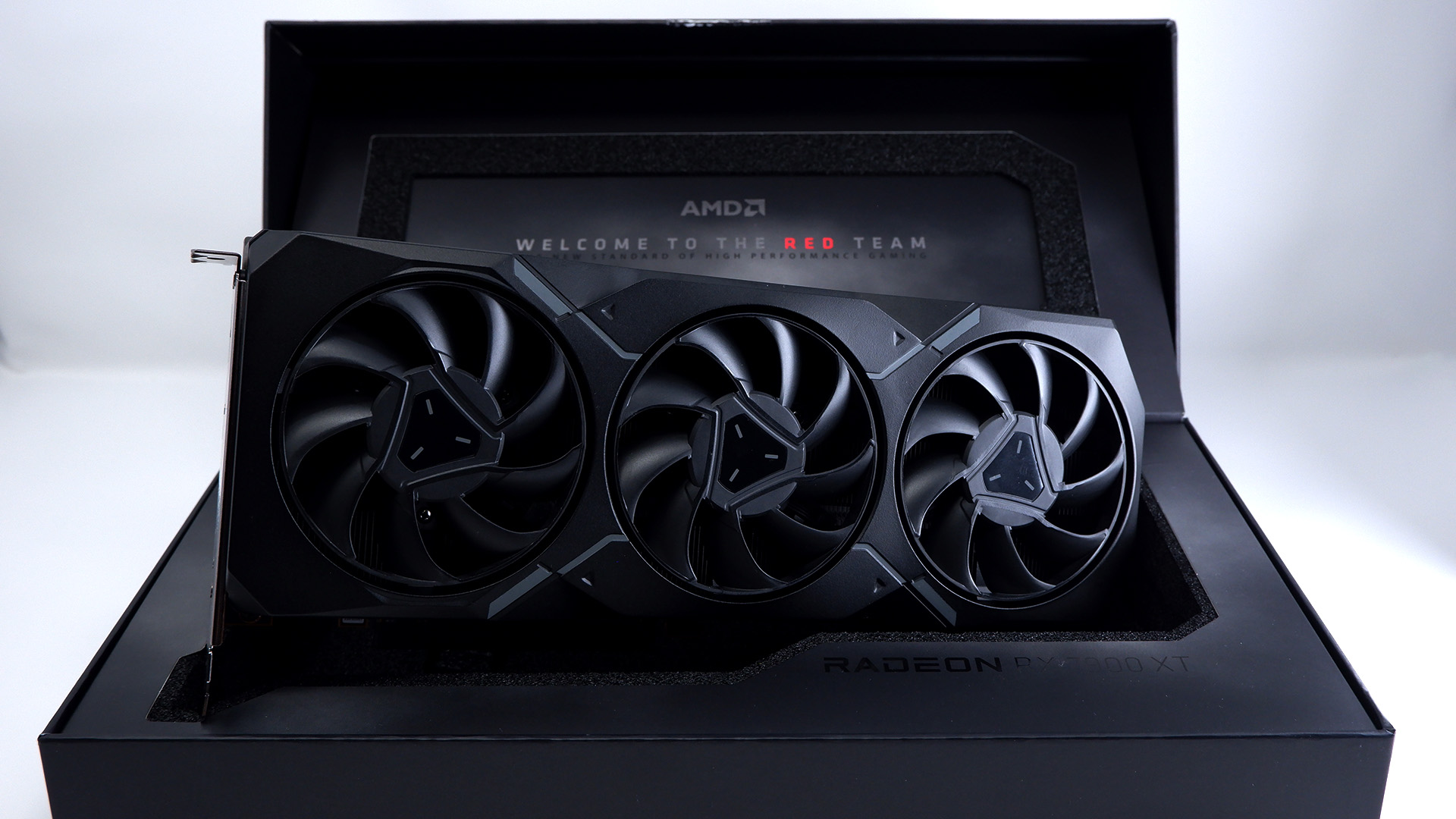
What I fear, though I can't say for certain in this review, is that the price of this card will likely creep up to closer to the XTX's $999 reference MSRP rather quickly, and at those sorts of prices any semblance of value it offers is completely wiped out. To make the RX 7900 XT in any way a good buy, it needs to be at, or excruciatingly close to, that $899 MSRP.
Is it better than an RX 6950 XT? Yes. Cheaper than an RX 6950 XT at launch? Yes. An RTX 4080 competitor? Nope. Is it worth saving your money on this instead of the XTX? Probably not. It's a good 4K graphics card if you look at the frame rates in isolation, but with a generally much better card right there for the taking, you best believe I'm going to want to find the extra $100 somewhere in my build and pick up the XTX instead.
You get what you pay for with the RX 7900 XT, which is about 90% of the RX 7900 XTX. Problem is the XTX is 100% worth spending another $100 on.

Jacob earned his first byline writing for his own tech blog. From there, he graduated to professionally breaking things as hardware writer at PCGamesN, and would go on to run the team as hardware editor. He joined PC Gamer's top staff as senior hardware editor before becoming managing editor of the hardware team, and you'll now find him reporting on the latest developments in the technology and gaming industries and testing the newest PC components.
